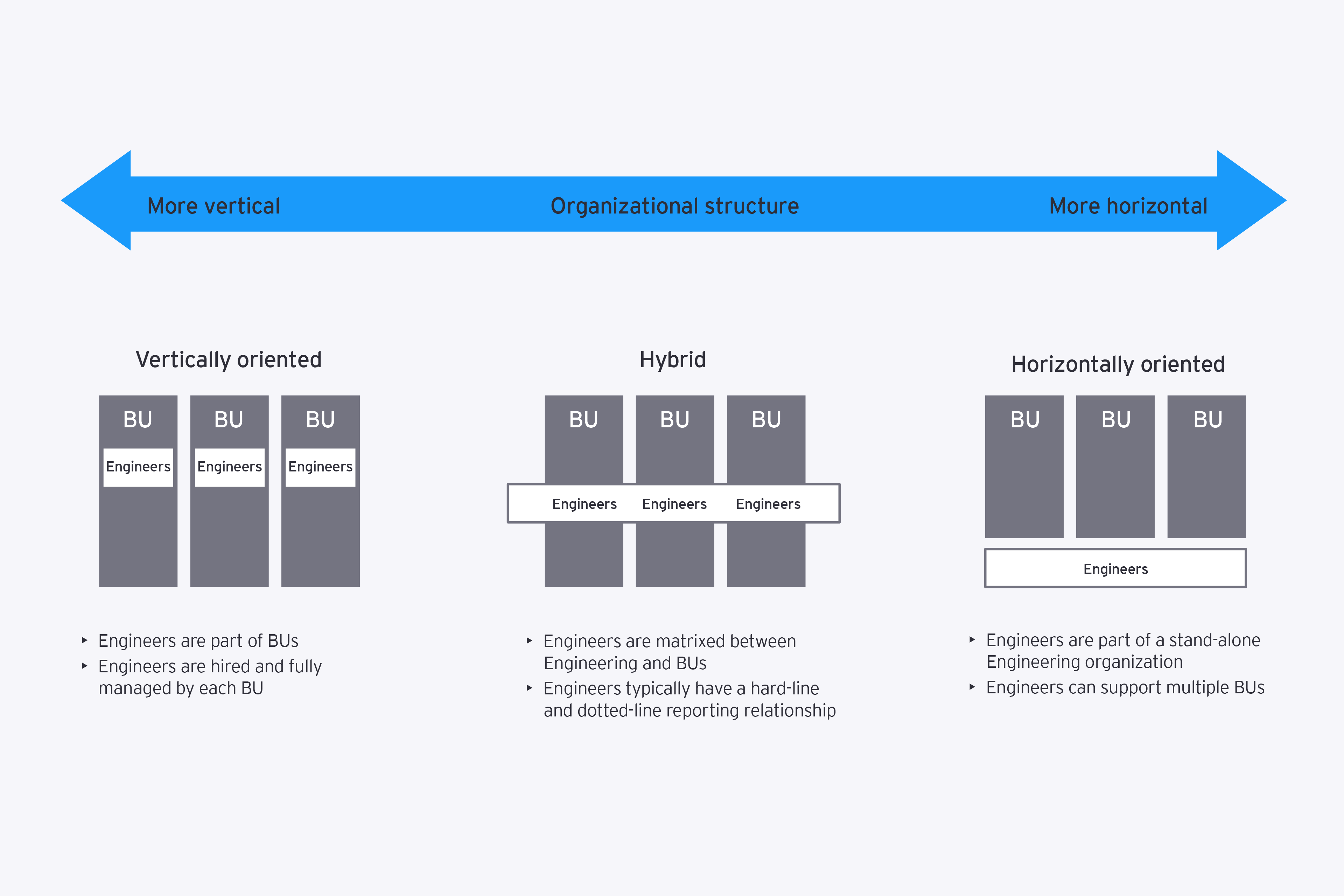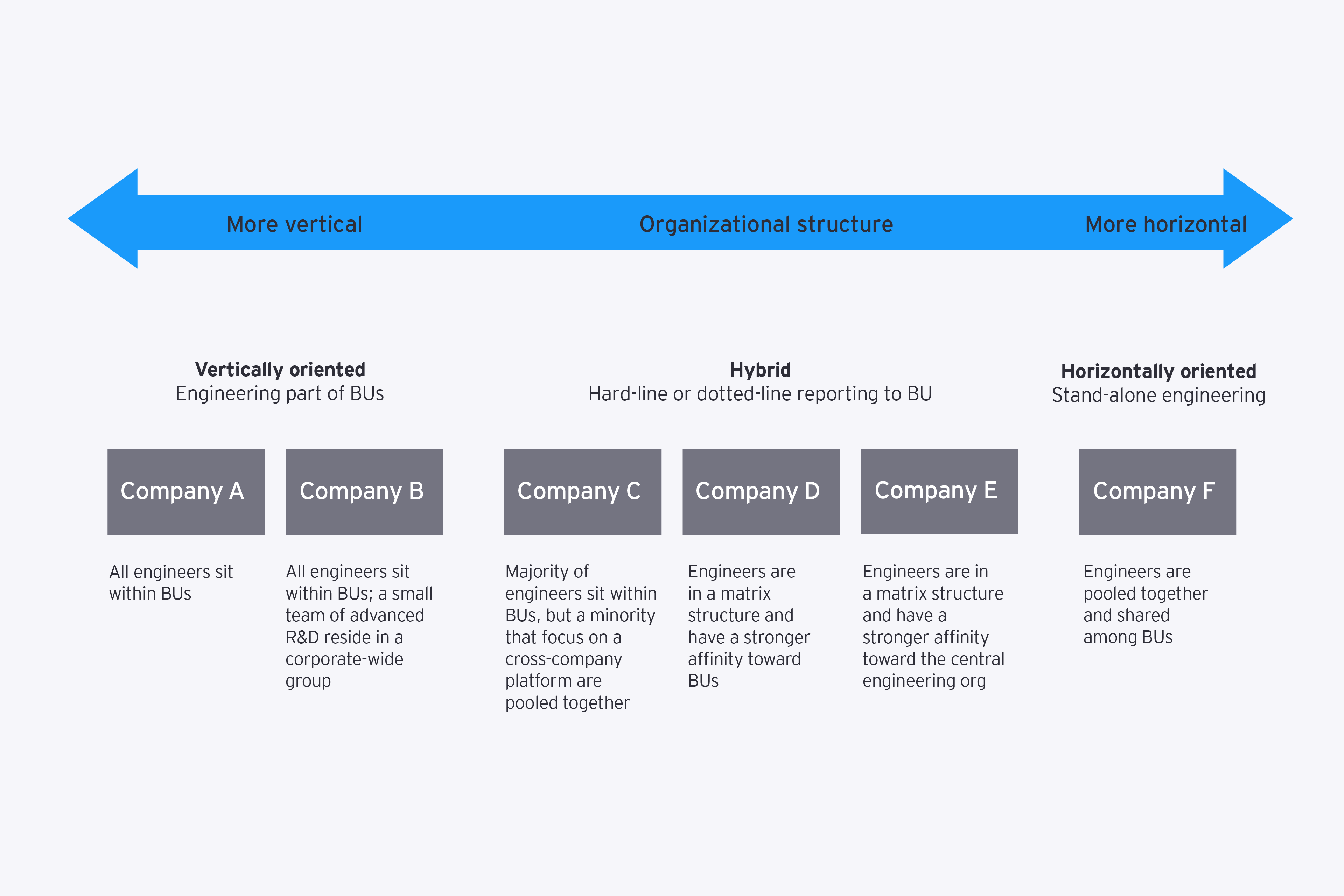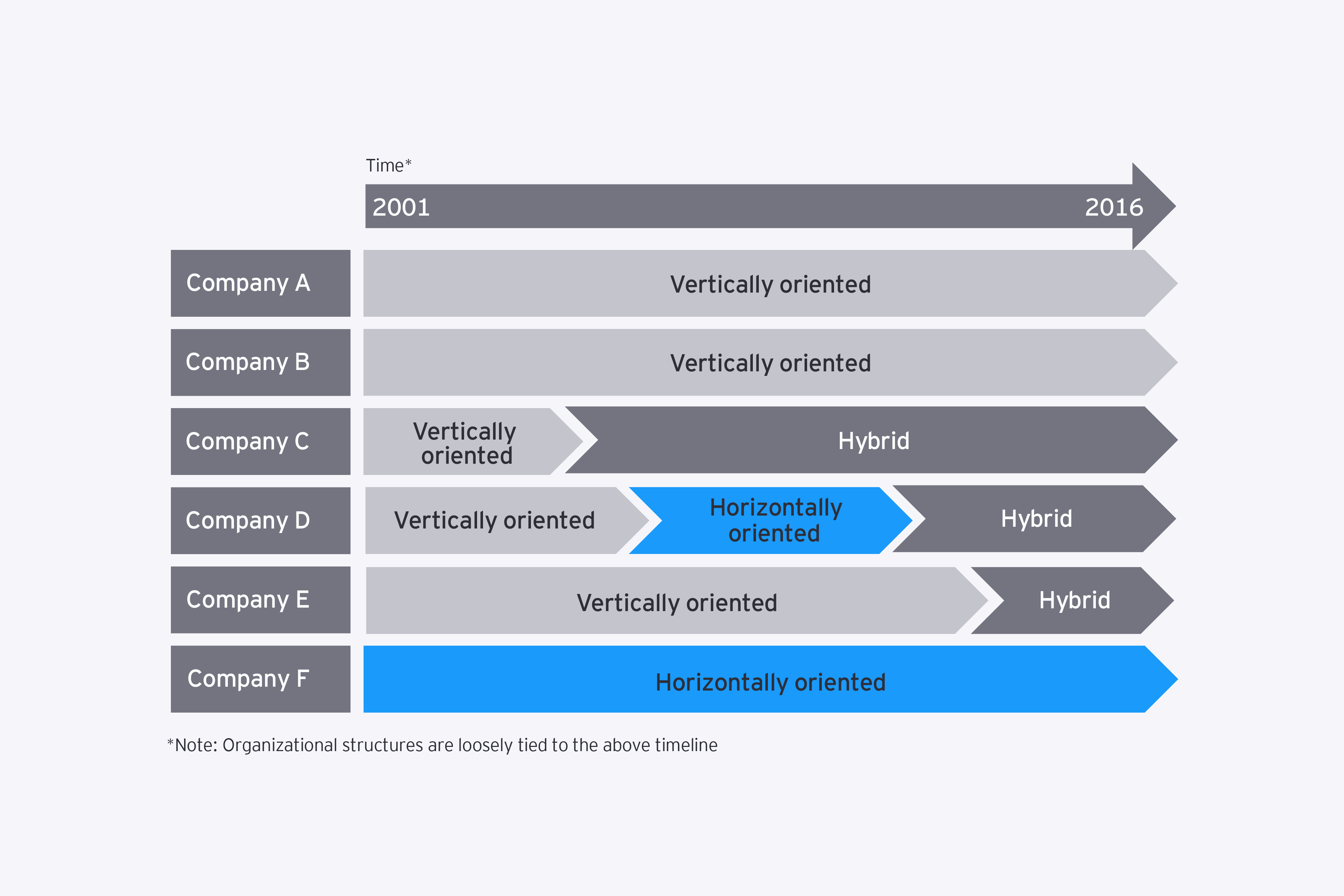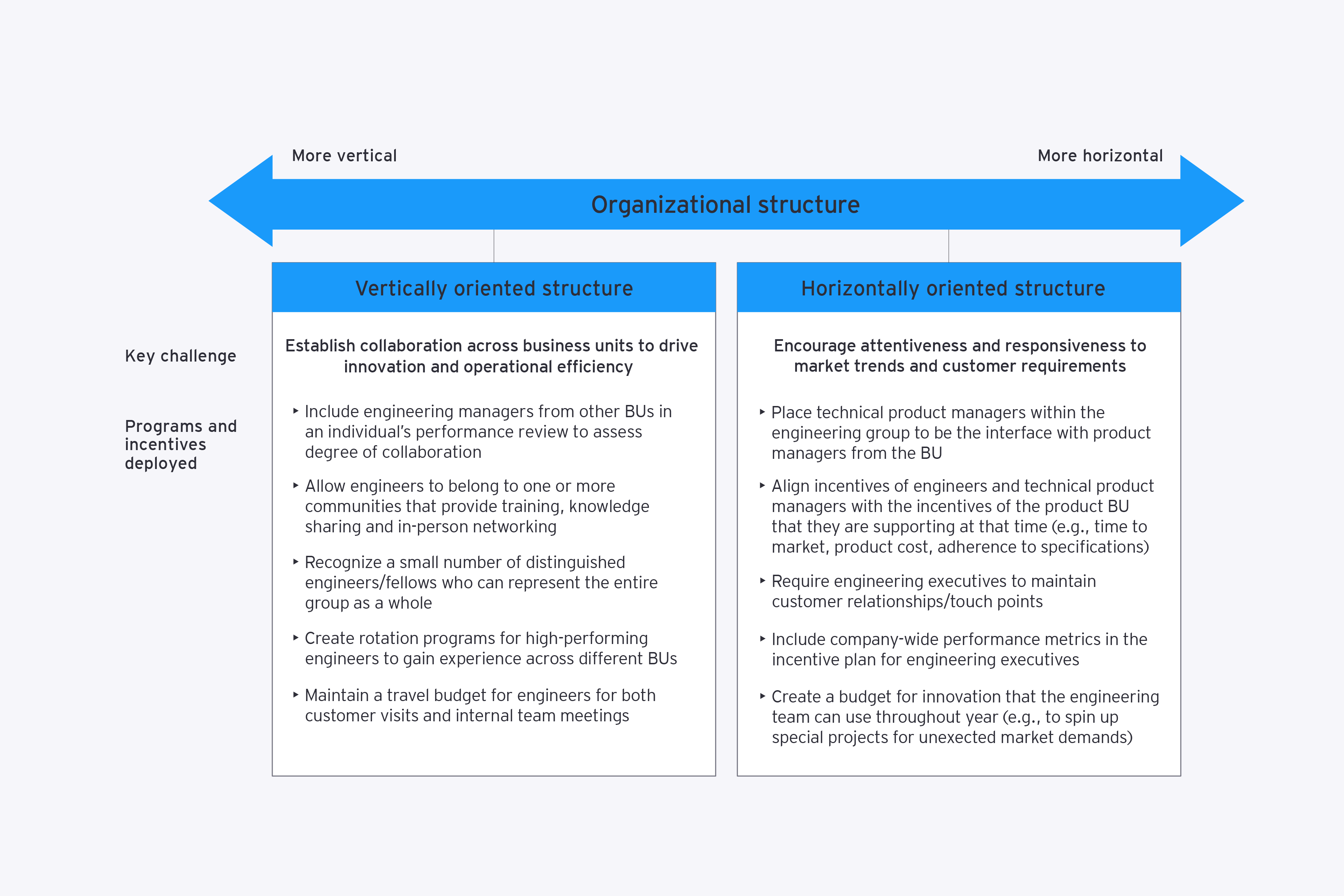What is the right structure for your company?
To understand the journey from where a company is to where it should be, management should weigh the pros and cons of each of the three organization structure types and understand which situations make a company better suited for one structure versus another.
Vertically oriented organizations enable the BUs to determine and develop products independently. This allows companies to shorten time-to-market for customer solutions and respond nimbly to customers with a rapid pace for changing requirements. Placing engineers in product silos, however, reduces collaboration between engineering teams and can lead to duplication of effort or missed opportunities for innovation. Vertically oriented structures tend to work well when market demands evolve quickly or are unpredictable and when there are a smaller number of larger customers with more customized or unique requirements.
Horizontally oriented structures pool the engineers together and deploy talent to meet the needs of the various businesses. This optimizes operational efficiency and helps with managing margins. It can create a headwind, however, when companies look to vertically integrate technologies for specific customers or to perform other real-time changes that can be delayed by lack of control in a horizontal structure. Horizontally oriented structures tend to work well when cost optimization is a top priority, technologies are shared across product lines, market demands are predictable, and there is a need or desire to re-allocate engineering resources between businesses quickly.
Hybrid structures look to attain the best of both worlds though various arrangements. In many cases, hybrid companies assign engineers to the BUs, but maintain a dotted line relationship back to engineering (or vice versa). Structures can grow in complexity from there. The pros and cons of these structures vary as much as the structures themselves, but generally the benefit is a balance between operational efficiency and speed-to-market.
This structure also offers a flexible career path, training and mentorship for engineers while still tying them directly to the performance of the BU. So why doesn’t everyone do this? The downside is that the models become complicated, and it can be difficult to assign clear goals and delineate responsibilities to executives, leading to slower decision-making and confusion over who is ultimately responsible for meeting deadlines, achieving financial targets and addressing customer needs.
Hybrid structures tend to work well for companies building in scale that want to provide both growth and flexibility to their engineers, as well as for companies where there is established mutual respect between executives in the BUs and engineering organizations.
Figure 4: Picking the right structure







